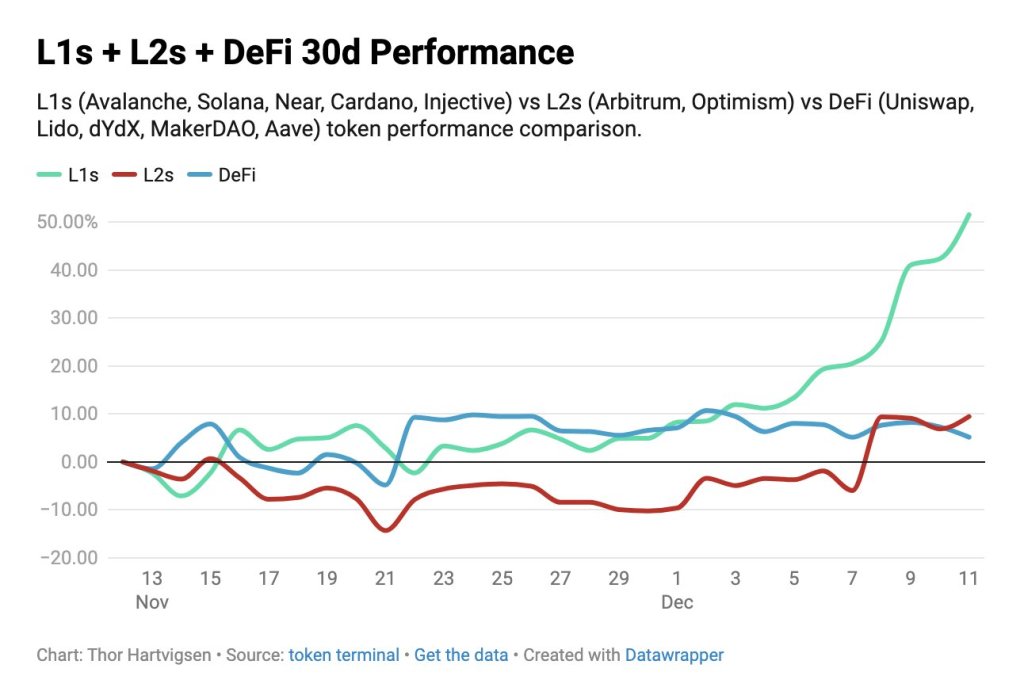Layer-1 Coins Like Solana Outperform Layer-2 and DeFi Tokens: Will This Continue In 2024?
In the current bull run, a curious trend has emerged: layer-1 coins like Solana (SOL), Avalanche (AVAX), and Cardano (ADA) are outperforming layer-2 tokens like Arbitrum (ARB) and decentralized finance (DeFi) assets like Uniswap (UNI) and MakerDAO (MKR).
Layer-1 Tokens Like Solana Leads The Performance Chart
Taking to X on December 13, Thor Hartvigsen, a data-driven decentralized finance (defi) researcher, noted that layer-1 coins under observation, like AVAX and SOL, are, on average, up 50% in the past month.
On the other hand, layer-2 coins like ARB and OP and DeFi tokens, like UNI and DYDX, are trailing, only adding around 10% during the same period.

Overall, the broader crypto market is on an uptrend, edging higher, with some, like Solana (SOL) and Bitcoin (BTC), completely reversing post-FTX collapse losses in November 2024.
Buoying this stellar price action is the noticeable improvement in sentiment due to improving regulatory developments and, most importantly, a revival in trading activity after the sharp contraction in 2022.
However, as highlighted above, the divergence in performance between layer-1, layer-2, and DeFi tokens raises questions about the underlying factors driving market preferences and the strategic positioning of various crypto asset classes.
One possible explanation for the Solana, Avalanche, and other layer-1 coins rally is that they are seen as more foundational assets, laying the groundwork for developing decentralized applications (dapps) and serving as the backbone of the broader blockchain ecosystem, including the launching of layer-2 solutions.
Do layer-2 and DeFi Tokens Rely on How The Mainnet Performs?
Meanwhile, layer-2 tokens like ARB and OP are often viewed as more specialized and focused on enhancing the scalability and throughput of layer-1 mainnets, especially the most active by market cap, Ethereum. Arbitrum, OP Mainnet, Base, and other options are explicitly designed to address the limitations of layer-1s.
To illustrate, when on-chain activity spikes in Ethereum, the network struggles with the deluge of transactions, forcing gas fees higher. This can discourage activity, allowing users to consider cheaper alternatives, including scalable layer-1s or layer-2 options.
On the other hand, DeFi tokens like UNI or Trader Joe’s JOE, for instance, can represent governance or utility. Notably, their performance is tied to how their underlying protocols perform, which also rely on the general market sentiment and the general health of the broader DeFi ecosystem.
Related Reading: Shiba Inu Whales Exiting From Exchanges: Is This Bullish?
The out-performance of mainnet coins could also be attributed to the growing demand for blockchain infrastructure.
The need for robust and scalable blockchains becomes increasingly crucial as the sphere matures and attracts more users. Considering their in-built utilities, these coins provide the foundation for layer-2 and DeFi tokens to thrive.